Last week, a team of RAN staff travelled to Fort McMurray in Alberta, Canada to participate in the Tar Sands Healing Walk, which is organized and hosted by members of the local First Nations Communities.
Walking amidst the Tar Sands destruction was a humbling and powerful experience. We are putting together a series of blogs to share our impressions and reflections. This, our first one, is a photo-diary of the walk.
1. Grand Chief Assembly of Manitoba Chiefs Derek Nepinak, Chief Allan Adam and Grand Chief Philip Stewart addressed the walkers at the beginning of our day. Each spoke about the importance of protecting land for future generations and the impacts that Tar Sands mining is having on First Nations Communities in Canada.
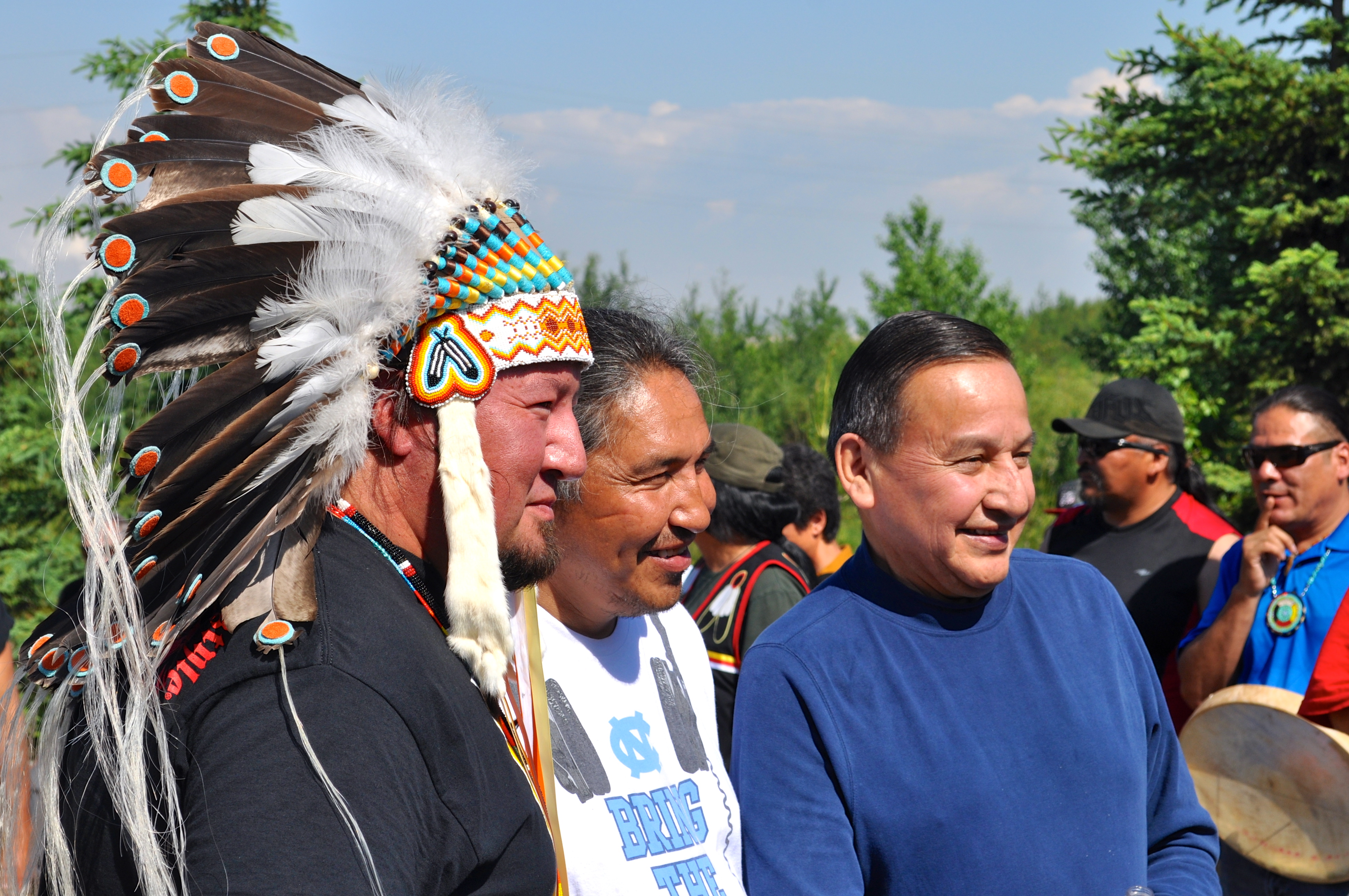
2. Aboriginal elders led procession under a banner reading “Stop the Destruction Start the Healing”. Along the way we stopped to pray for the land’s healing with offerings of tobacco, water and song.
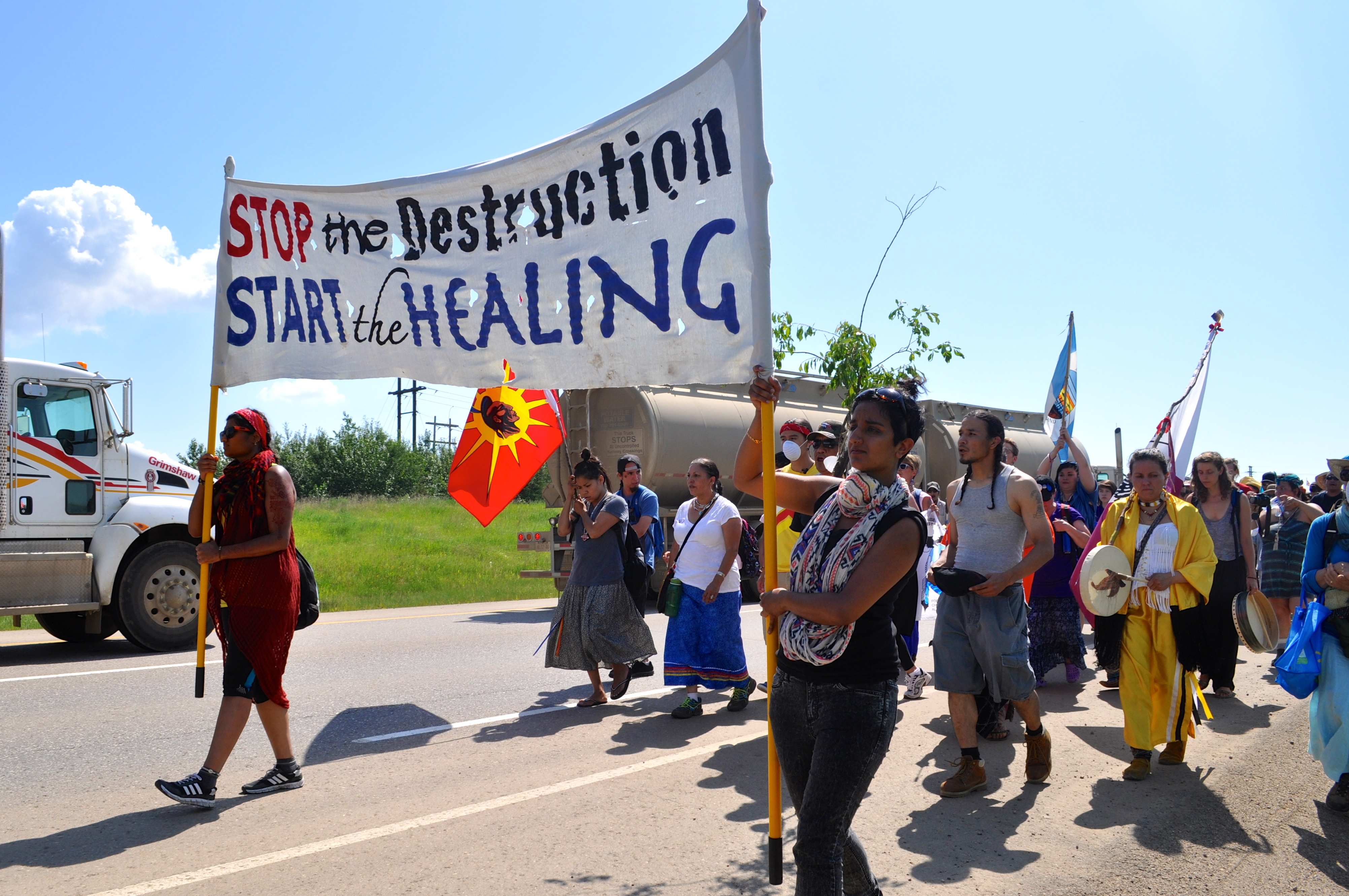
3. We walked for more than nine miles around Syncrude’s excavation site, refinery and tailings ponds.
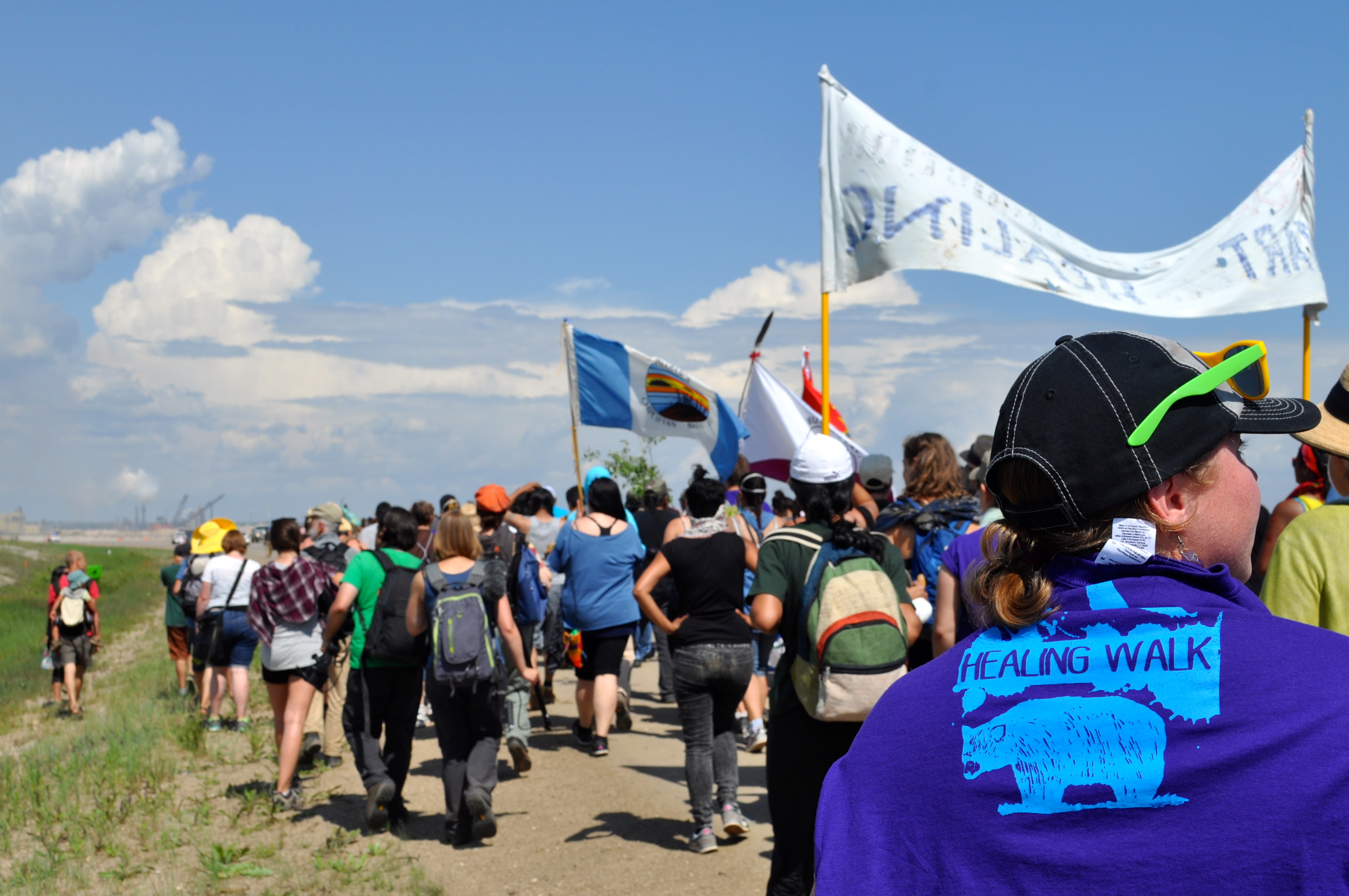
4. Many of the vehicles that passed our walk were transporting ‘potable water’. The local groundwater has been polluted by the Tar Sands mining operations.

5. This ‘Tailings Pond’ contains waste water from the Tar Sands extraction process. The neon work-suited scarecrows have been placed to deter birds from landing on the pond. 1600 ducks died after landing on a Syncrude tailings pond in 2008.
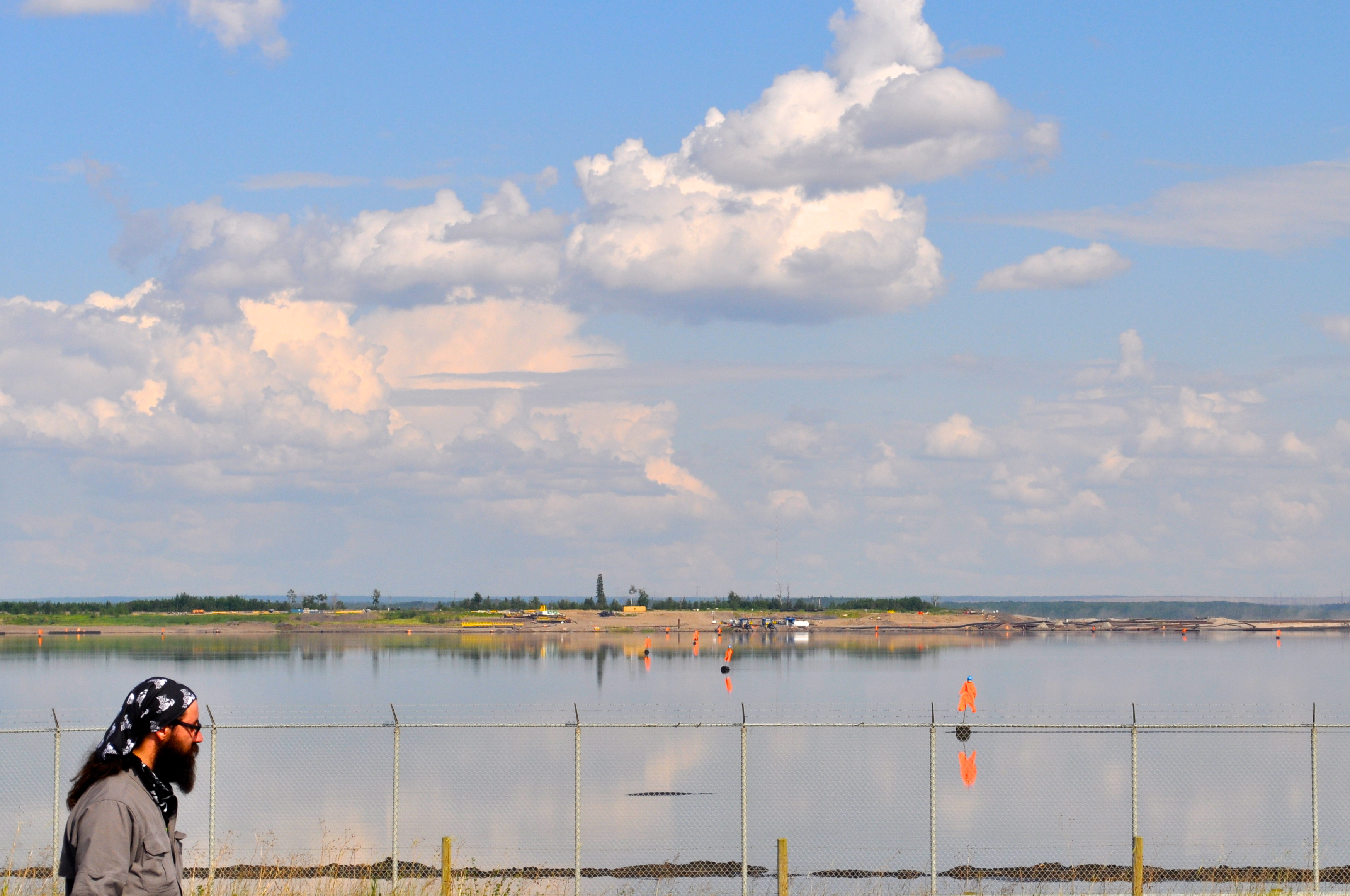
6. We were accompanied on the walk by two First Nations drum groups.
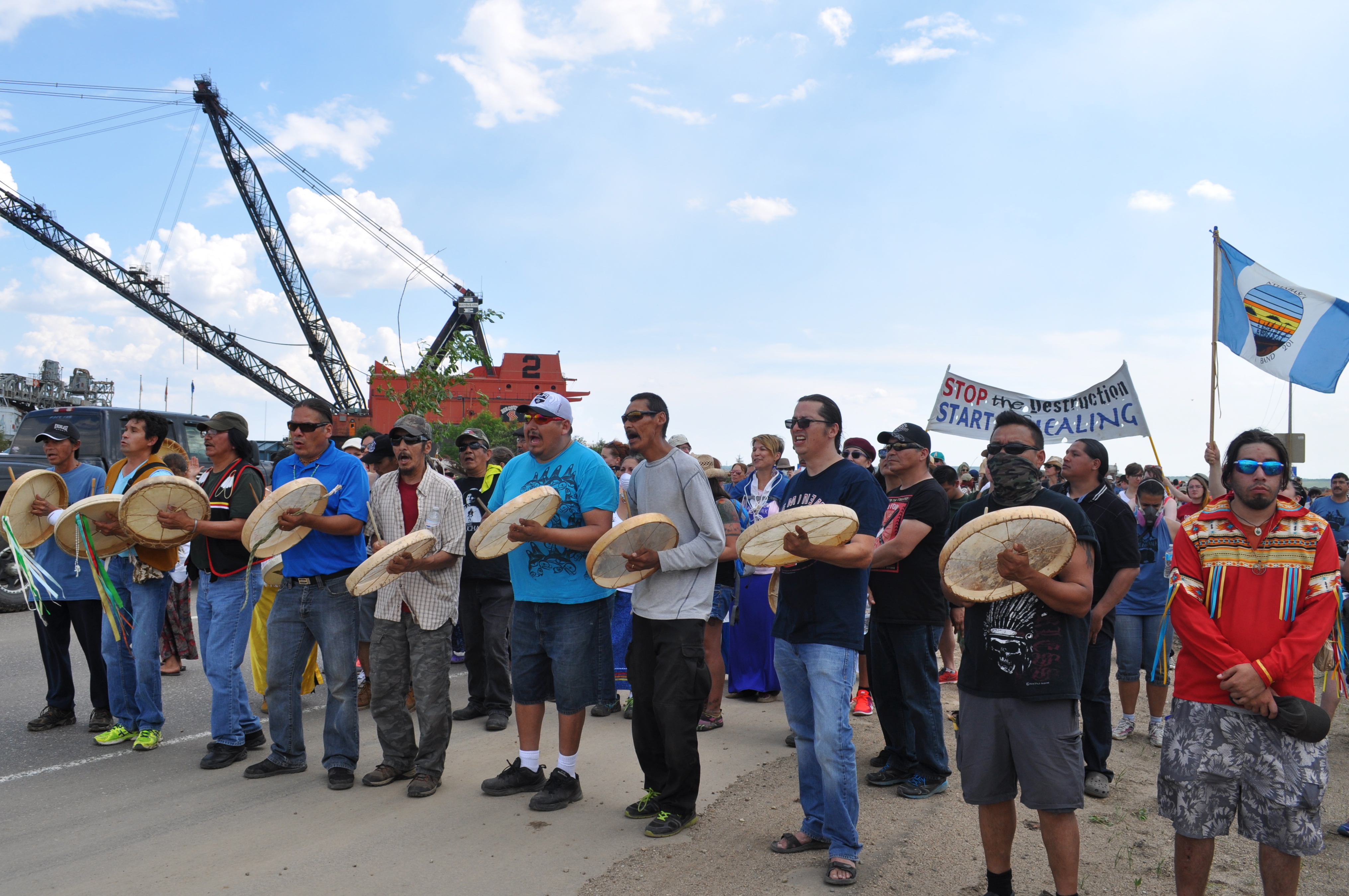
7. The air was thick and heavy with fumes from Syncrude’s refinery.
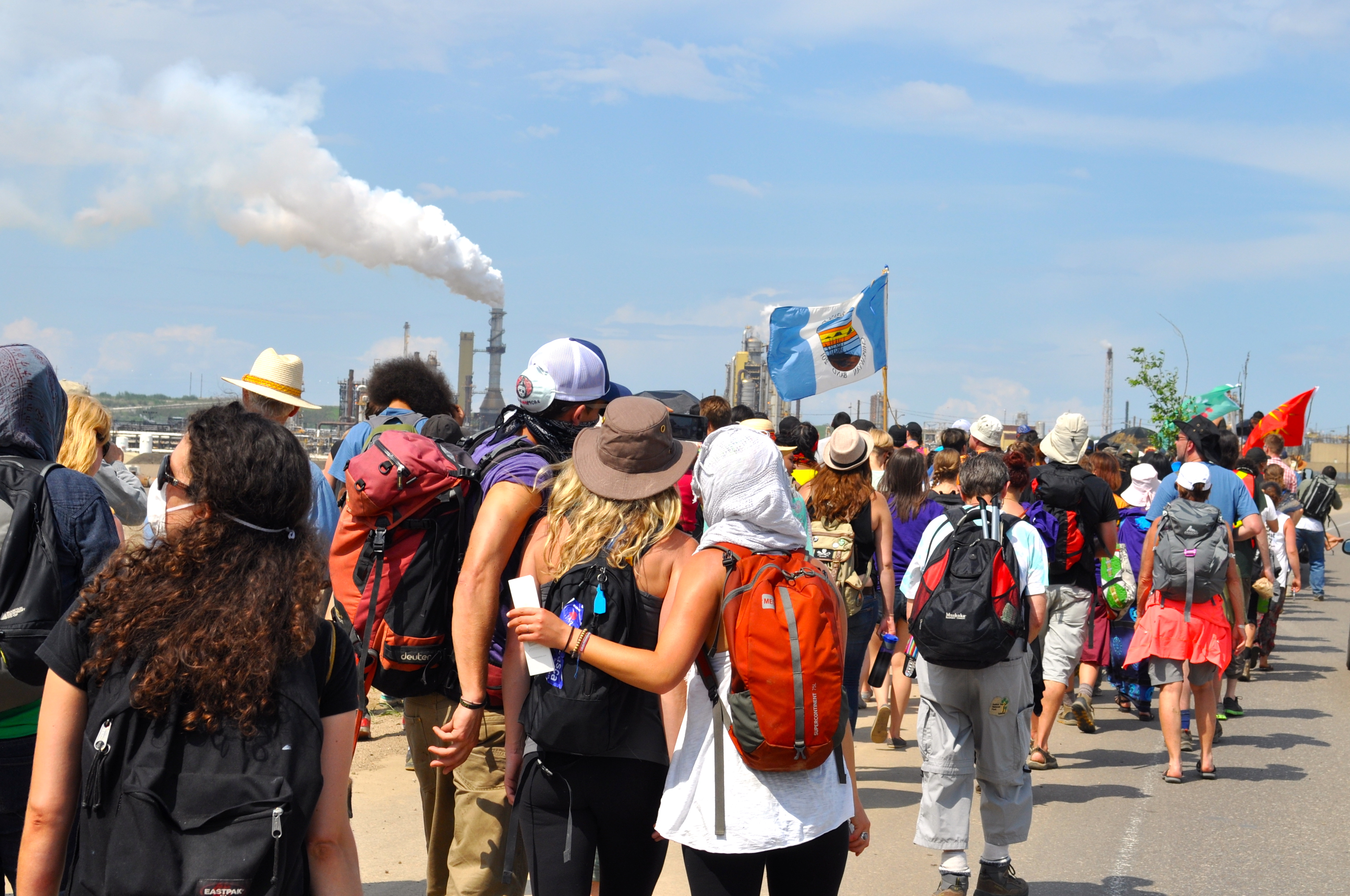
8. We passed a ‘work camp’ where Syncrude workers live, in the shadow of the refinery.

9. The RAN team, next to Syncrude’s refinery.
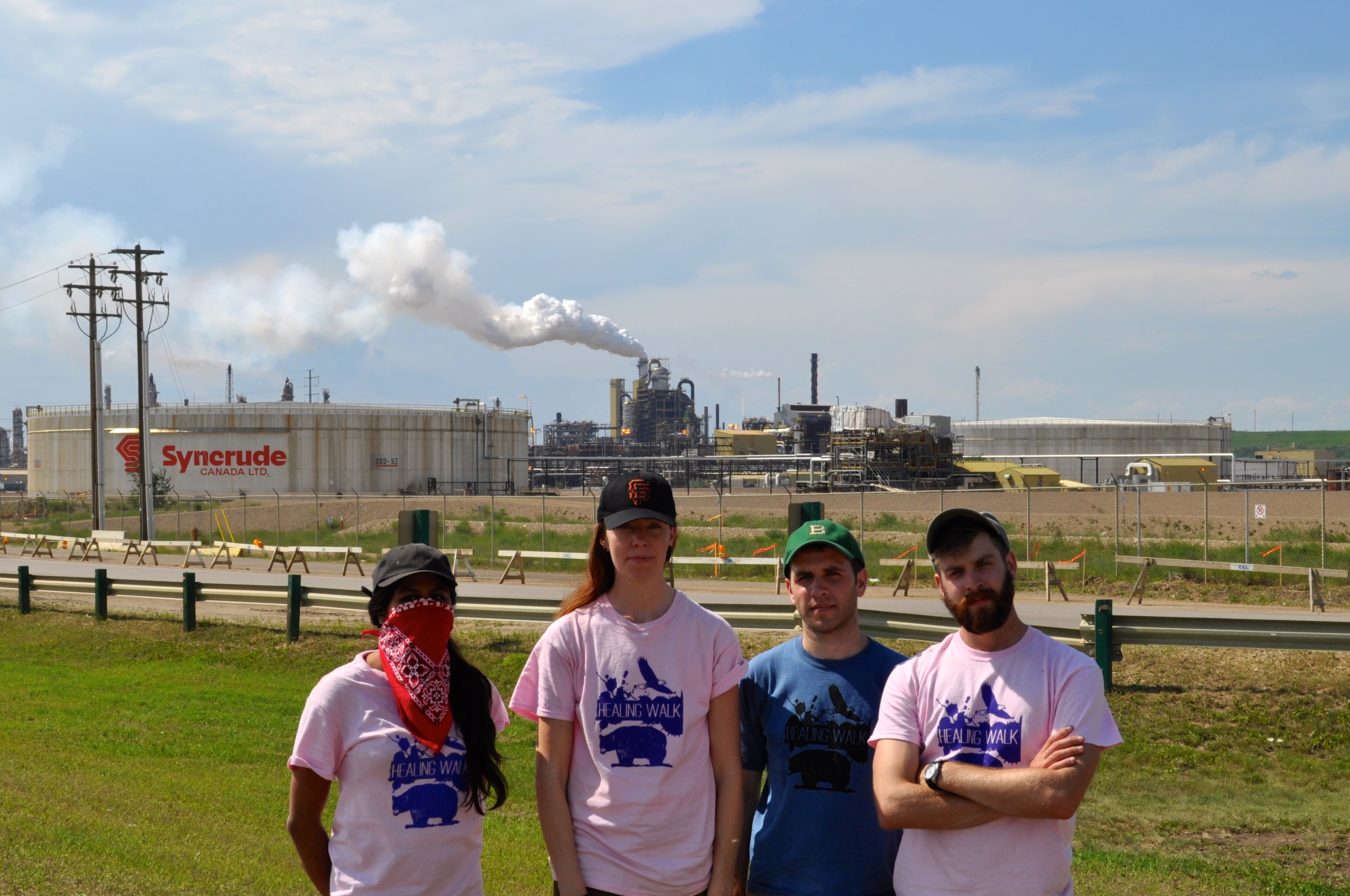
10. We passed several areas labeled as ‘reclamation’ sites. These bore no resemblance to the healthy Boreal forest ecosystem that existed before the mine was developed.
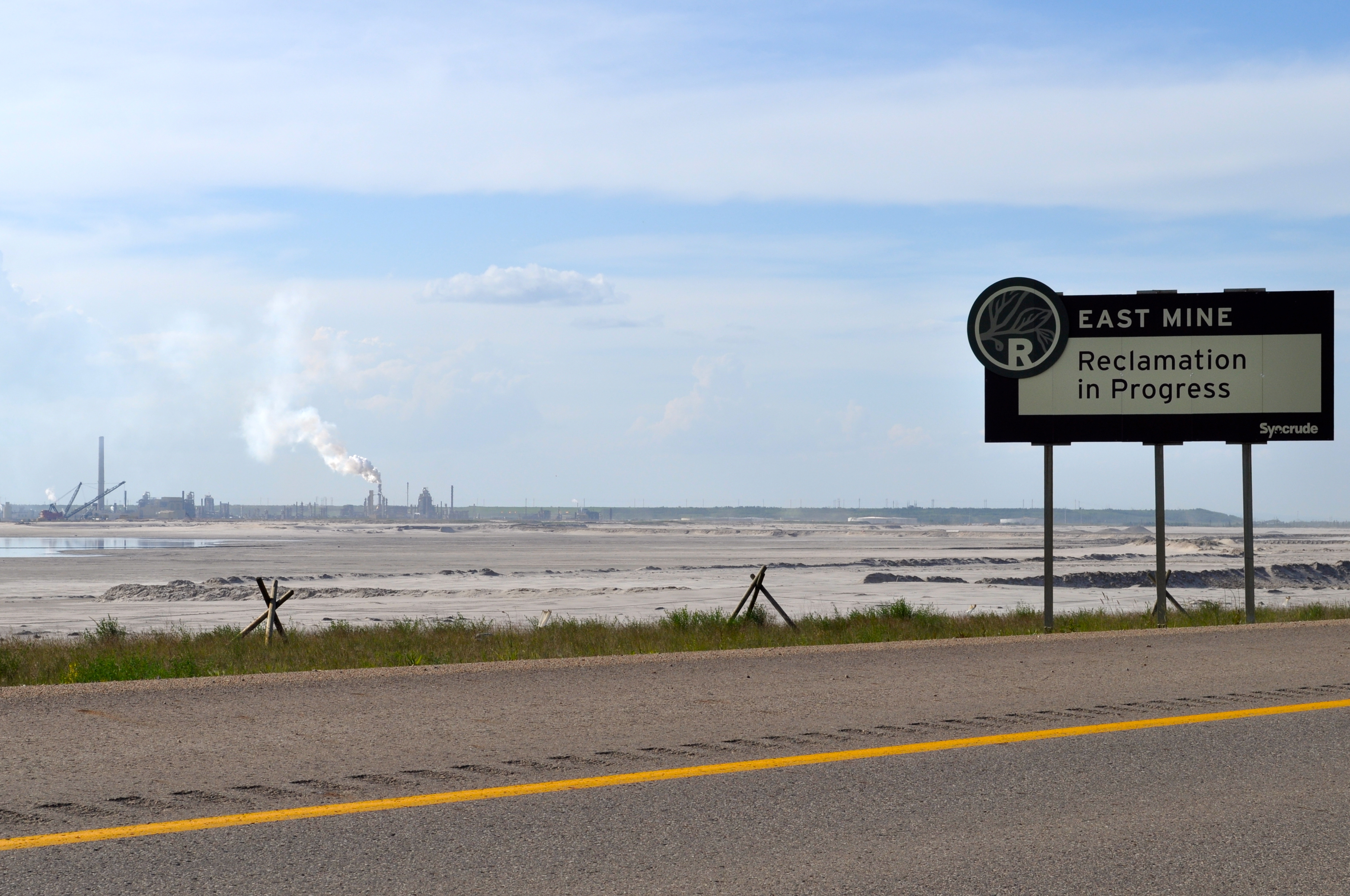
Stay tuned for future blog posts sharing our impressions and reflections.